|
- Introduction
- The NABU Network
- Reconstruction and
Online Collection
- YUNN unveiled
- YUNN goes to Ottawa
- Can you help?
|
Introduction |
|
In 2005, the York University Computer Museum began a
reconstruction project and online collection devoted to the NABU
Network. The NABU's public launch in 1983 marked the creation of the
first commercial computer network to provide high-speed access to
information, software, and digital entertainment directly to homes
of personal computer (PC) users. It was a technologically and
culturally significant achievement, yet the YUCoM project is the
first and only historical attempt to analyze or fully document the
NABU Network technology.

Fig 1. NABU Network Adaptor
|
|
The NABU Network
|
|
The NABU Network was designed and implemented by a Canadian
company NABU Manufacturing between 1981 and 1983. The underlying
idea behind the network was to link home personal computers to cable
television networks which would supply a continuous, high speed
stream of computer programs and information (at the rate of 6.5
Mbits per second) to almost an unlimited number of users. Cable
television was a uniquely ideal technology for NABU to deliver
software and data to home computers because of its high bandwidth
and networking capabilities.
After the official launch on Ottawa Cablevision in October of
1983, the NABU Network was introduced by Ottawa's Skyline
Cablevision in 1984 and a year later in Sowa, Japan, via a
collaboration between NABU and ASCII Corp. NABU Network subscribers
could rent or buy a NABU PC and dedicated network adaptor, and use
an ordinary television set as a display monitor. Once connected to
the network, a user could choose from various application programs
and services in categories including entertainment, information and
guides, education, and professional programs. Dedicated NABU
magazines, newsletters, programming guides, and user groups provided
subscribers with supplementary information and support.
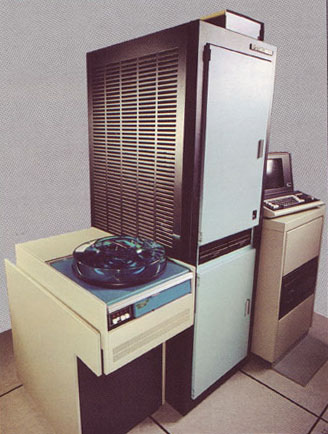
Fig. 2. NABU Network Head-End Computer
Described as "the most innovative, daring, and least appreciated
venture in the Canadian computer and communications industries" by
some (D. Thomas), and "the `Internet' -- ten years ahead of its
time" (follow
this link)), the NABU Network was an innovative attempt to
radically reshape the principles of personal computer-based public
access to information and entertainment. Financial difficulties lead
NABU Network Corp. (formerly NABU Manufacturing) to close down
operations in 1987 but the ideas which once powered the NABU Network
are reemerging in more mature forms backed by Internet-based
technologies.

Fig 3. NABU Network Ad (1984)
|
|
Reconstruction and
Online Collection |
|
- PH1. The first phase of the project was the collecting
of hardware, software, technical, and historical information about
the NABU Network. The result of the first phase is a collection of
original NABU hardware used by subscribers and some of the
hardware used by NABU developers. The collection also includes
some NABU technical and promotional documentation as well as
interviews with NABU engineers.
- PH2. The purpose of the second phase of the project was
to reconstruct and describe the communication protocol between the
NABU PC (NPC) and NABU Adaptor (NA). The NABU network operated by
broadcasting application programs and data to every authorized
subscriber on the cable system from a high-speed head-end computer
(see Figure 2). Authorized subscribers could access information
through their NPCs connected to the cable system via an advanced
communications adaptor NA (see Figure 1). Programs and data were
loaded into NPCs memory and processed/executed by users. NA was
continuously receiving the NABU channel and demodualting and
digitizing the signal coming down the cable. On the NPC side, NA
was in two-way communication with the NABU computer. It was
responding to NPC's requests for downloading data and application
programs from the cable. The result of the second phase is a
documented communication protocol between NPC and NA.
The understanding of the protocol allowed us to emulate NA using a
standard PC (SPC). The emulator consisted of a Pentium II computer
running a JAVA application program; it used the serial communications
port of the SPC to communicate with the NPC. In this way we were able to
fully communicate with NPC via a SPC.
- PH3. Once an original NPC was connected to a NA and turned on, it requested
from NA two software items to be located on the network and sent to NPC. One
was the downloadable operating system (or DOS). The other was the Main Menu
software that allowed a user to navigate the network and to select and
download the selected items.
In Phase 3 of the project, we developed and implemented a version of DOS
which allowed the reconstruction and implementation
of the Main Menu software and some application programs.
Phase 3 was completed in September of 2007. The result was the York University
NABU Network (or YUNN) software -- a functional (but minimal) system which,
with high degree of historical accuracy, preserved the software functionality
and screen appearance of the NABU Network.

Fig. 4. YUNN Main Menu's category selection page
Version 1.0 of
YUNN's Main Menu program has all the functionality of the original NABU Main
Menu software with the exception of joystick interface which has not been
implemented yet. The screen shots in figures 4 and 5 show sample pages displayed
during the appplication software selection process. The first screen shot
captures the main categories of application programs that will be available on
YUNN while the second shot depicts the selection of "YUNN ATTACK" game via
SHORTCUT facility of the menu program. Note that the design of YUNN's logo follows
the original NABU logo's layout.

Fig. 5. YUNN Menu: selecting an application program using SHORTCUT
- PH4. In this phase we continued the development of DOS. Sample
application programs (in the GAMES and EDUCATION categories) were
written or adopted for YUNN.
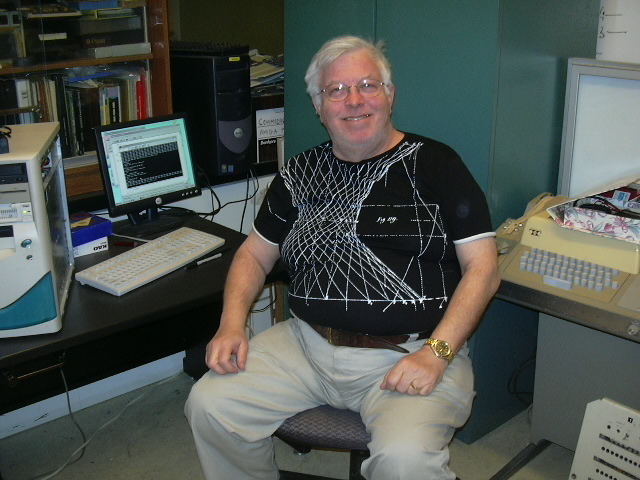
Software developer Bill Kindree getting ready for phase four
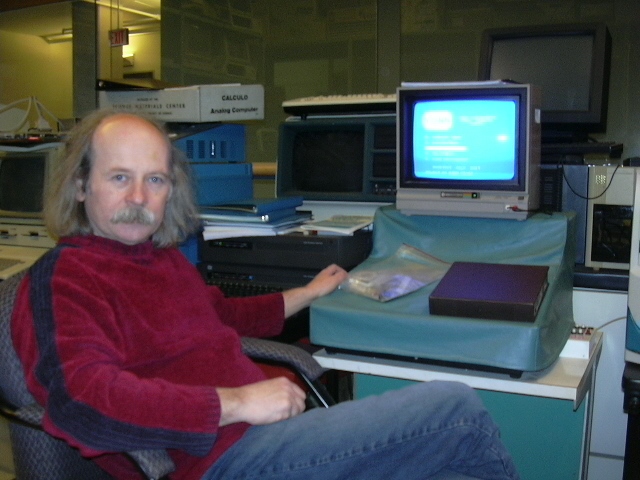
Zbigniew Stachniak on a break from the YUNN Main Menu's testing
- PH5. In October 2009, we obtained a collection of original NABU software
created for the NABU CABSERVE development system. This collection includes a sample
NABU Network programming cycle as well as software development tools. After the
modification of YUNN's communication software, the obtained programming cycle is
fully operational. Currently, we are working on fully documenting this software suite.
We have also initiated the development of the NABU PC emulator that would allow
an access to the reconstructed NABU Network via a standard PC.
|
|
YUNN unveiled |
|
YUCoM's version of the NABU Network was officially unveiled and demonstrated on April 24,
2009 during the NABU Network at York University Computer Museum event that
took place at York University.
The event was opened by John Kelly-- the founder of NABU Manufacturing--who talked
about the genesis of the NABU Network and the economic and technological climate of its
invention and development.

YUNN unveiled: Bill Kindree (left), Zbigniew Stachniak, John Kelly (right)
John Kelly's presentation was followed by a lecture on the NABU Network reconstruction
project at YUCoM (by Z. Stachniak and W. Kindree) and by the demonstration of YUNN.
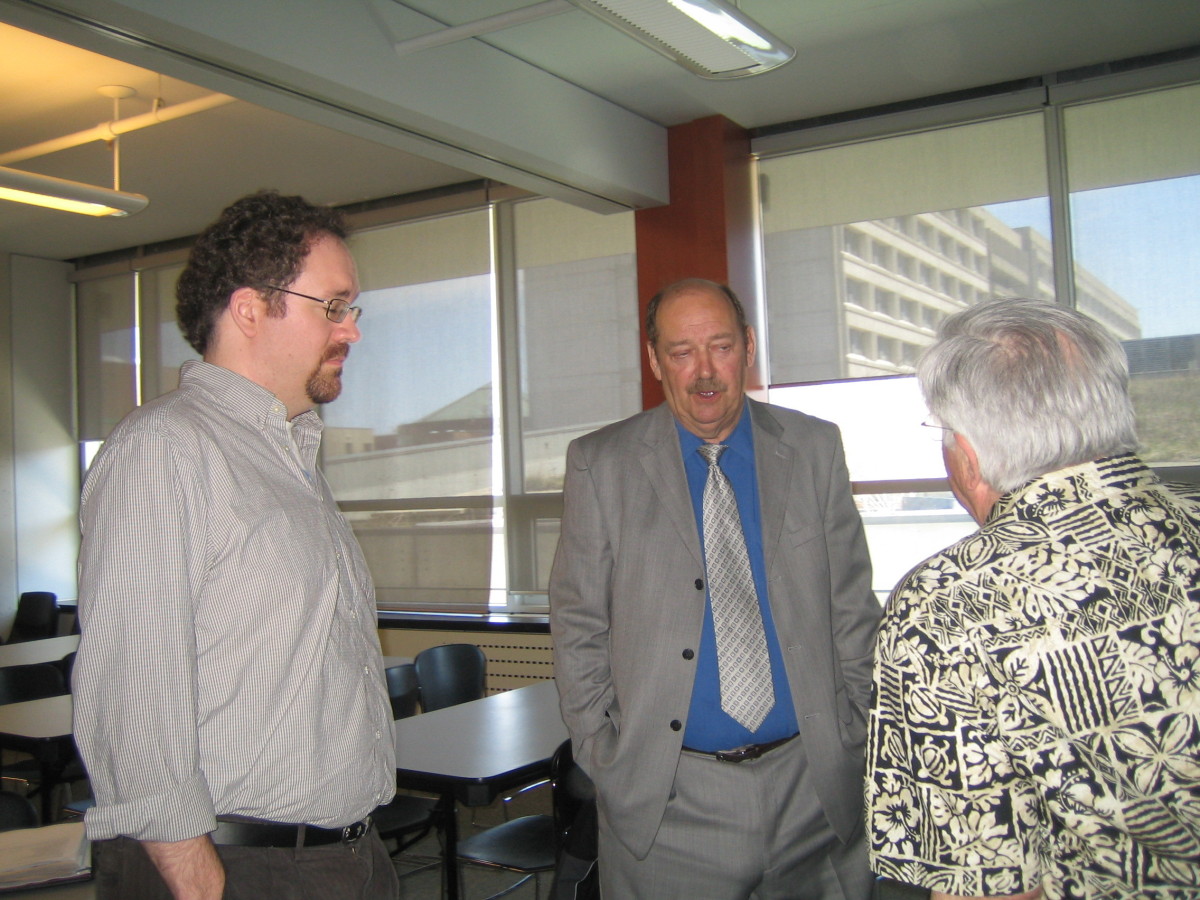
Discussion after presentations: Scott Cambell (left), John Kelly, Bill Kindree (right)
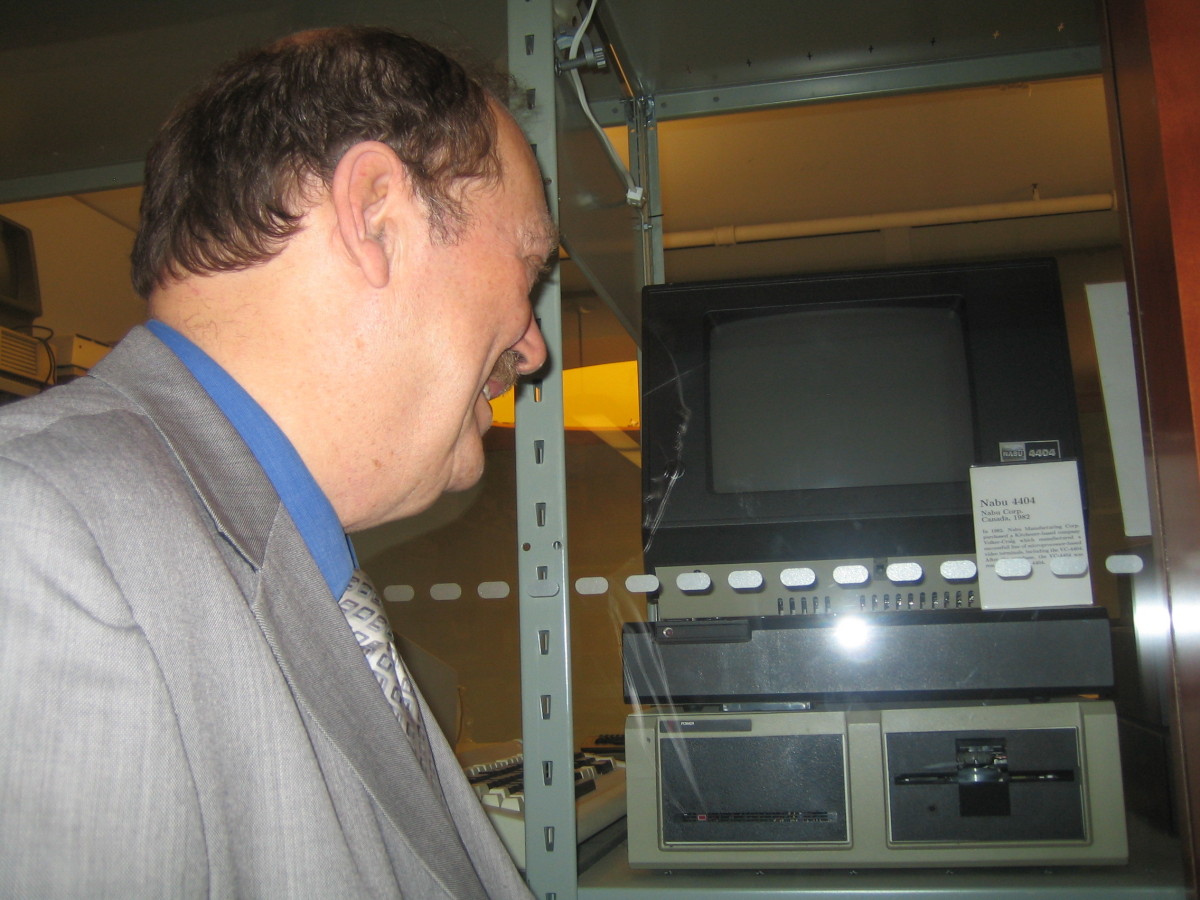
John Kelly in front of a NABU 1600 computer at YUCoM
The NABU event at York was described by Mark Sutcliff in his April 25, 2009 article
NABU Network an idea well ahead of its time
for Ottawa Citizen.
|
|
YUNN goes to Ottawa
|
|
On November 21, 2009, YUCoM's version of the NABU Network was demonstarted during a
special NABU Network event organized by the Canada Science and Technology Museum (CSTM).
The event, organized in an excellent way by David Pantalony, CSTM's Curator of Physical
Sciences and Medicine, was well attended. John Kelly's opening address was followed
by the NABU Network Reconstruction Project at York University lecture, by
YUNN's presentation, and by formal and informal discussions. It was particularly rewarding
to see so many former NABU employees and NABU Network users participating in the event.
See also event preannouncements:
yunn on CTV
yunn at CSTM and
CSTM NABU event program.
The NABU event in Ottawa also resulted in a number of significant donations made to
York University Computer Museum (we thank all the donors for supporting our project)
and in the nabupedia innitiative by Leo
Binkowski.
|
|
Can You Help? |
|
The original technical literature
describing the NABU Network (manuals, technical reports, schematic
diagrams, software listings) constitutes the primary historical
source of information about the network. The success of the
reconstruction project hinges upon having an access to these primary
sources. While YUCoM has collected some of this material
(see
NABU Network Collection ), most of
the NABU documents still cannot be located.
YUCoM is actively searching for any information that could help
to locate NABU documentation. We are also interested in any
undocumented information about the network, as personal
recollections, newspaper articles and other NABU related material.
YUCoM is also looking for volunteers who could join the project.
We are specifically looking for programmers (Z80 Assembler) and
"vintage" game designers. If you can help, please contact YUCoM by
sending an e-mail to:
| |




